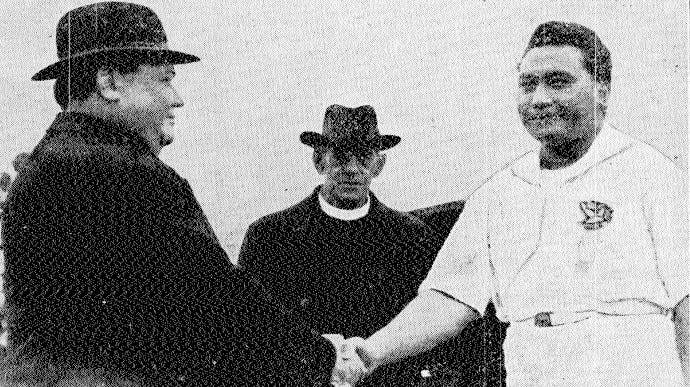Hall Skelton filed a Writ of Habeas Corpus with the Supreme Court at the end of January. He called for the release of Tupua Tamasese, saying the transfer of a prisoner from one part of the empire to another was outlawed. Judge Archibald Blair heard the matter with Tupua Tamasese in attendance.
‘Dressed with scrupulous care, his pure white attire, blue bow tie, and purple rosette, in striking contrast to the sombre garb of his warder,’ a reporter described it.
Hall Skelton argued the case was unique: ‘It is a question whether the New Zealand legislature had power to act at all. You might as well say that a man may be deported from New Zealand to serve his sentence in Sāmoa. We think that Tamasese has been sent to this country to give him an extra dose of punishment among strange people and strange surroundings.’ Blair chipped in: ‘I see. They don’t like strange goals, but prefer one they are used to.’
The judge rejected the application, saying Sāmoans were not covered by habeas corpus because New Zealand was answerable, on Sāmoa, to the League of Nations, not the sovereign. Hall Skelton donated his fee, $21 ($2075 in 2019), to the Mau.
Tupua Tamasese served the full six months in Mount Eden. Allen wanted him kept locked up but Ward replied that the government could not ‘defend his retention’ in jail. Released at 10am on 4 June 1929, Tupua Tamasese was met by his wife, Ta’isi and around 40 members of the Sāmoan Defence League. The Auckland Star covered his release, asking him to smile with his wife outside the jail: ‘It would be hard if I couldn’t’. He was in a white lavalava, with a broad ribbon of the Mau adding a dash of vivid colour.

Keep reading with a 7-day free trial
Subscribe to Michael Field's South Pacific Tides to keep reading this post and get 7 days of free access to the full post archives.



